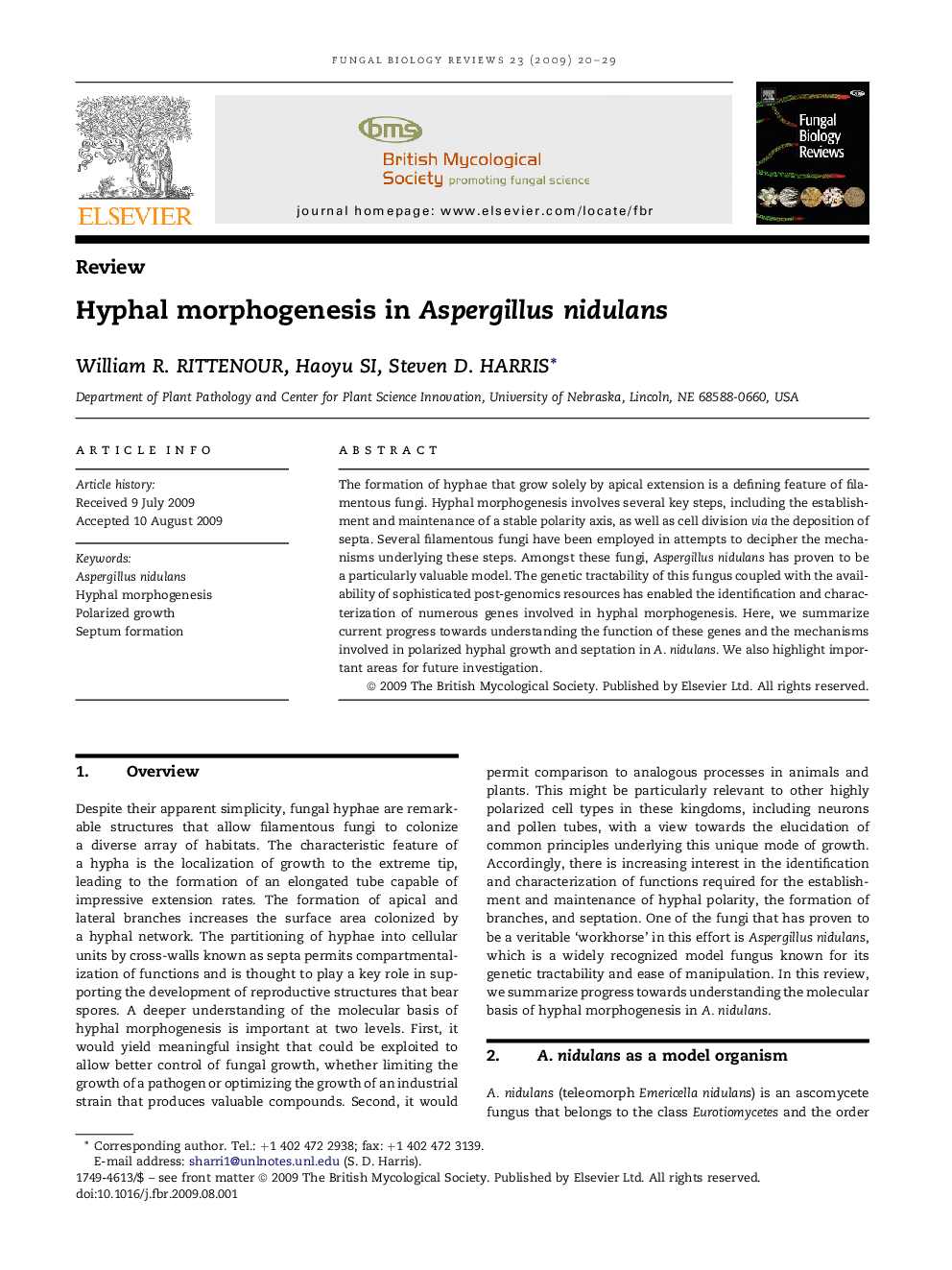| Article ID | Journal | Published Year | Pages | File Type |
|---|---|---|---|---|
| 2180488 | Fungal Biology Reviews | 2009 | 10 Pages |
The formation of hyphae that grow solely by apical extension is a defining feature of filamentous fungi. Hyphal morphogenesis involves several key steps, including the establishment and maintenance of a stable polarity axis, as well as cell division via the deposition of septa. Several filamentous fungi have been employed in attempts to decipher the mechanisms underlying these steps. Amongst these fungi, Aspergillus nidulans has proven to be a particularly valuable model. The genetic tractability of this fungus coupled with the availability of sophisticated post-genomics resources has enabled the identification and characterization of numerous genes involved in hyphal morphogenesis. Here, we summarize current progress towards understanding the function of these genes and the mechanisms involved in polarized hyphal growth and septation in A. nidulans. We also highlight important areas for future investigation.
